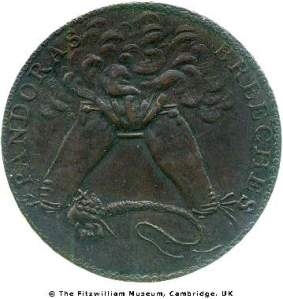I’m often conscious that I don’t fully understand the differences between the US and UK higher education processes, so I’m not quite sure how bothered to be by a recent news item that I came across at Cliopatria. The story is that Drew University, a small liberal arts college in New Jersey, recently rebuilt its entire history Ph. D. program with a decidedly vocational bent. They have striven to assure that each student, of the few they will carefully choose, will teach their own course for a year as part of their programme, which will be closely constrained to take no more than five years and be tested throughout with historiographical essays that are more like what they’re actually going to have to do after they graduate than the exams they used before. They also aim to haul in all kinds of help from other departments and contribute as much as they can back in exchange.
A lot of this makes sense for a very small university running a graduate program; to do so at all, which the article emphasises is unusual, requires a lot of pooled resources and selectivity about they’re trying to achieve. In fact I wish big departments in the UK would do more about this kind of sharing of aims between schools and periods, perhaps they could benefit from some similar pressures. That said, there are a lot of things that strike me very oddly, and I don’t know how many of these are just a difference between US and UK practices. Testing, first and foremost. In the UK most Ph. D. students have to pass an upgrade at some point in their course, without which they can only attain a Masters degree; there isn’t really any other form of testing, because the ambitious ones will already be working on conference papers and publications, which one could see as the real tests. And while I’m familiar with the archetype of the never-finishing grad student from the USA’s pop culture, this doesn’t stop me thinking that five years is still a huge chunk of one’s life to use on a doctorate. I took five years to do mine, but three of them were part-time and I was an Assistant Lecturer on a course with the time of two fewer teachers than it had been planned for during some of that; I also spent much too long on a first article, though I guess the work paid off at the time. In the UK it is conventional to over-run, but since one usually has to do so on one’s own money, rarely by more than a year; someone who over-runs by more than a year either has a private income, or probably isn’t going to finish, because they have already had to start in on a real-world career to make ends meet and stop needing the doctorate or enjoying the study. It takes unusual bloody-mindedness to continue to defy one’s normal employability in those circumstances. So there is obviously something basically different about the experience in the USA that means I don’t know how weird the bit that unsettles me is.
That bit is, how much like a vocational lower degree this seems. This bit particularly struck me:
At Drew University our public humanities project will require all our doctoral students to hold internships at intellectual arenas outside the university: museums, foundations, publishing houses, schools, and magazines. In partnership with these institutions, our students could apply their knowledge by designing humanities programs that directly serve the public, such as a museum exhibit or a high school curriculum. We will also sponsor a workshop on writing for a lay audience, taught by a professional author. Thus our program will prepare students for careers in both academia and the nonacademic `knowledge industries’—and some of them will probably choose the latter path.
Now, I know people who would really have benefited from such provision in their doctorate, because that is the path they have wound up on. All the same, is it the point? I did my Ph. D. to do a particular piece of research that would be recognised to have shown that I could be a real historian and work in the profession. In fact as many have found that is not so easy, no matter how good your thesis, and the work just doesn’t stop there. So I can certainly imagine that this could just be seen as realism, and it’s not as if the Drew programme makes anyone less likely to get hired; in fact, in some ways they are merely formalising practices that exist in most places already, like finding your students teaching experience on your courses, and their students will benefit considerably from this being done properly I imagine. But it bothers me all the same that this is being so tailored to getting a job. Really, as I’ve said, history is not supposed to be a marketable discipline, though you can surely write books that make you money from it. But Drew are picking a small cadre of élite students and instructing them how to deal with there being no way to continue their research. They are basically saying it doesn’t matter how good you are, you may not make it here. Surely only realistic, and nothing I haven’t told students of my own who will probably go on to outperform me. All the same it feels like something’s gone wrong if it finally has to be institutionalised.

















